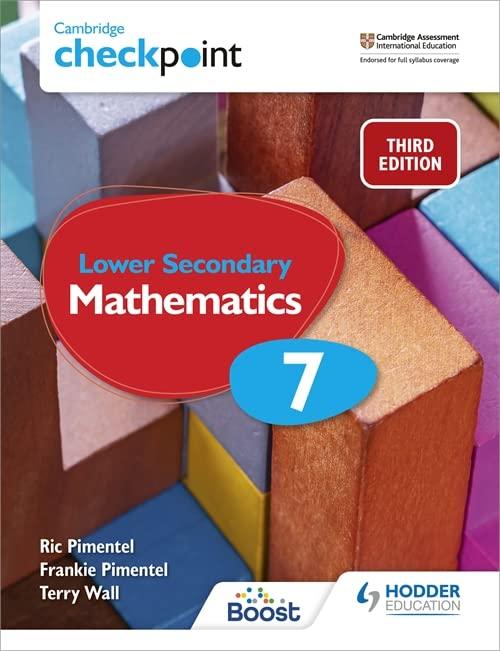One student places a total of 50 counters of three different colours in to a bag (for
Question:
One student places a total of 50 counters of three different colours in to a bag (for example, they place 30 red, 15 blue and 5 green counters in a bag).
The aim of the activity is for a second student to predict how many counters of each colour are in the bag. The second student takes a counter from the bag, records its colour and then places it back in the bag.
a. (i) Take a counter from the bag, record its colour in a frequency table and then return it to the bag. Do this ten times.
(ii) From your results can you predict how many of each colour are in the bag?
b. (i) Repeat the task (a)i) for another 10 counters.
(ii) Did you get the same results as before? Did you expect to get the same results as before? Justify your answer.
(iii) Combining the results from the first 20 counters, can you now predict how many counters of each colour are in the bag?
c. (i) Repeat the task (a)i) as many times as you think is necessary for you to be able to predict how many counters of each colour are in the bag.
(ii) Make your prediction and then check it against the contents of the bag. How close was your prediction?
d. Does repeating an experiment more times, make a probability prediction more accurate? Use your results to justify your answer.
Step by Step Answer:

Cambridge Checkpoint Lower Secondary Mathematics Student's Book 7
ISBN: 9781398301948
3rd Edition
Authors: Frankie Pimentel, Ric Pimentel, Terry Wall





